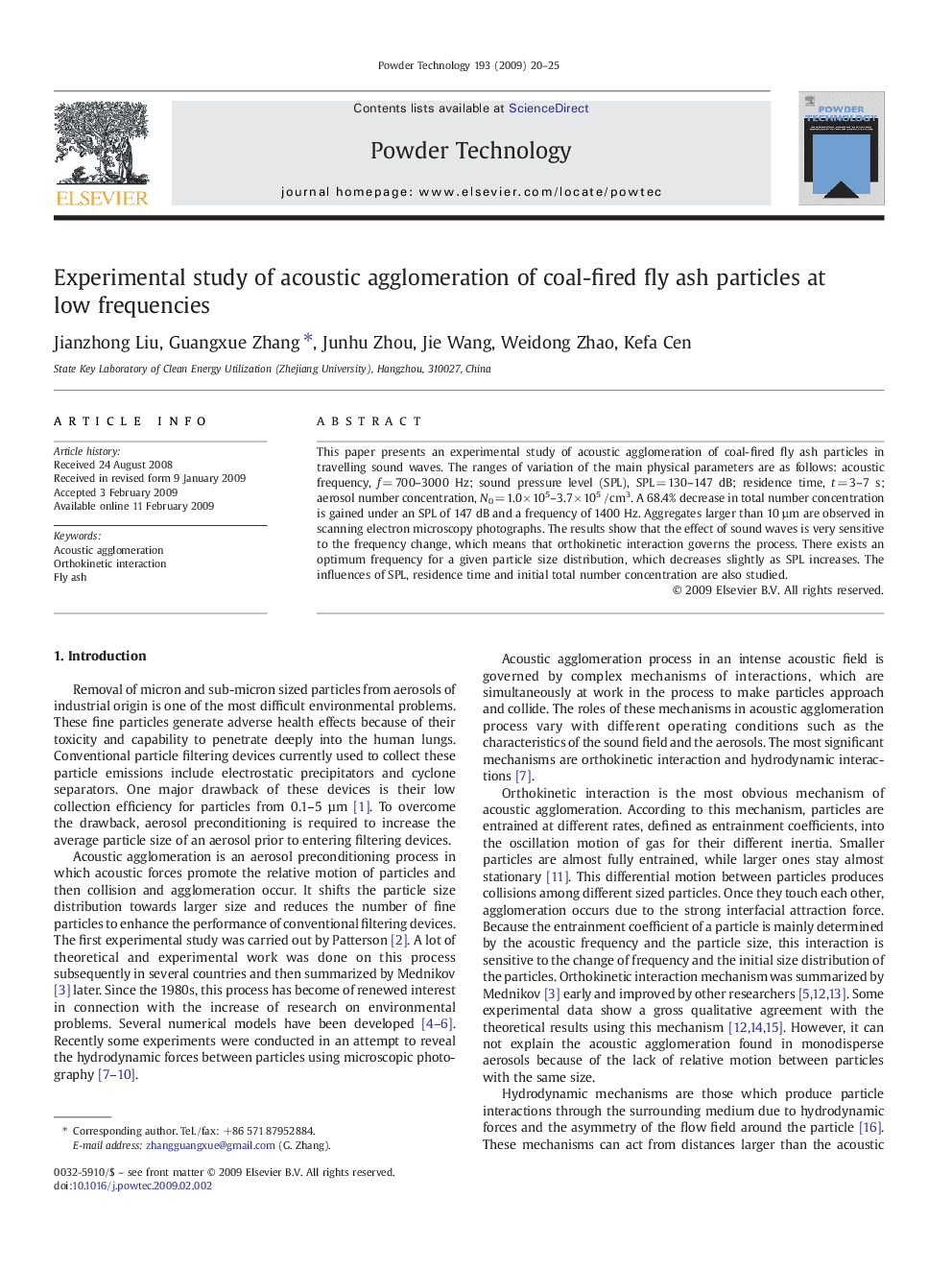| Article ID | Journal | Published Year | Pages | File Type |
|---|---|---|---|---|
| 237999 | Powder Technology | 2009 | 6 Pages |
This paper presents an experimental study of acoustic agglomeration of coal-fired fly ash particles in travelling sound waves. The ranges of variation of the main physical parameters are as follows: acoustic frequency, f = 700–3000 Hz; sound pressure level (SPL), SPL = 130–147 dB; residence time, t = 3–7 s; aerosol number concentration, N0 = 1.0 × 105–3.7 × 105 /cm3. A 68.4% decrease in total number concentration is gained under an SPL of 147 dB and a frequency of 1400 Hz. Aggregates larger than 10 µm are observed in scanning electron microscopy photographs. The results show that the effect of sound waves is very sensitive to the frequency change, which means that orthokinetic interaction governs the process. There exists an optimum frequency for a given particle size distribution, which decreases slightly as SPL increases. The influences of SPL, residence time and initial total number concentration are also studied.
Graphical abstractAcoustic agglomeration of coal-fired fly ash particles is experimentally studied. At 1400 Hz, a 68.4% decrease in particle number concentration is gained under a sound pressure level of 147 dB. Acoustic frequency has a great influence on agglomeration. There is an optimum frequency for an aerosol of given particle size distribution, and it slightly decreased as sound pressure level increased. It is concluded that orthokinetic interaction is the dominant mechanism for the conditions of our experiments.Figure optionsDownload full-size imageDownload as PowerPoint slide
